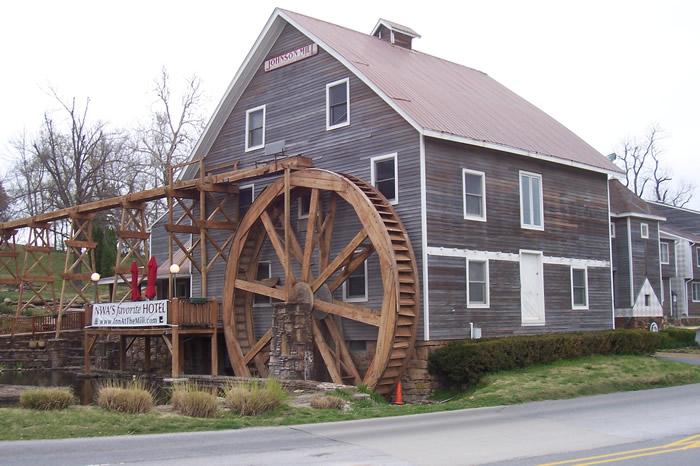
Johnson Mill
Washington Co. | Arkansas | USA
Watersource: Springs that feed Clear Creek.
Johnson Mill
The facility is located at the Johnson Exit, off I-540/US 62/US 71, north of Fayetteville. Take Greathouse Springs Road/Main Dr. at exit 69 east about 1500' to the mill on the left.

The mill has been converted into the Inn at the Mill in the early 1990's and opened its doors in 1992. As a modern 52 unit hotel.GPS: 36? 8.23'N, 94? 10.76'W 1,184'/361 meter Springdale Quadrangle
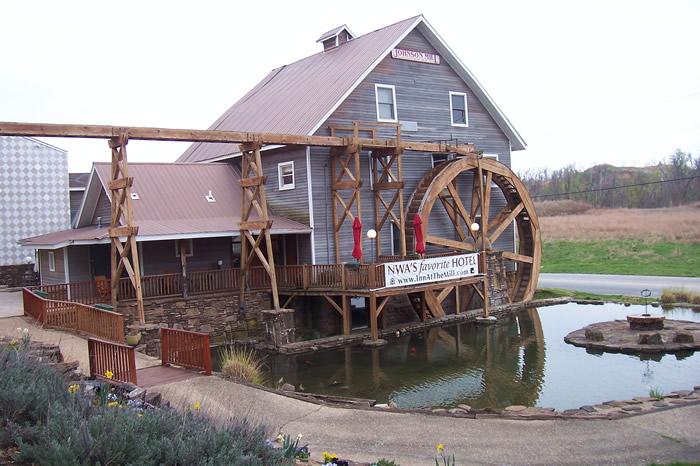
Major renovations to the historic structure included eight fabulous suites: two in the hand-hewn beams of the old mill, and six in the New Wing.
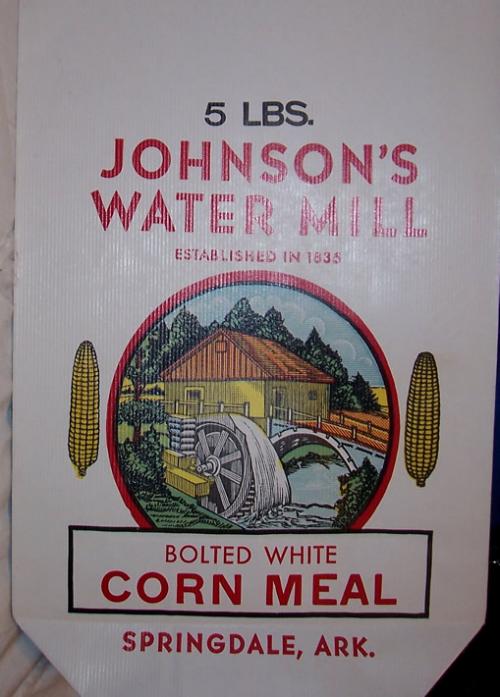
Five pound paper sack used for bolted white corn meal manufactured and ground at Johnson's Water Mill, Springdale, Arkansas.

A world class restaurant, James at the Mill, is situated up the hill from the the old mill.
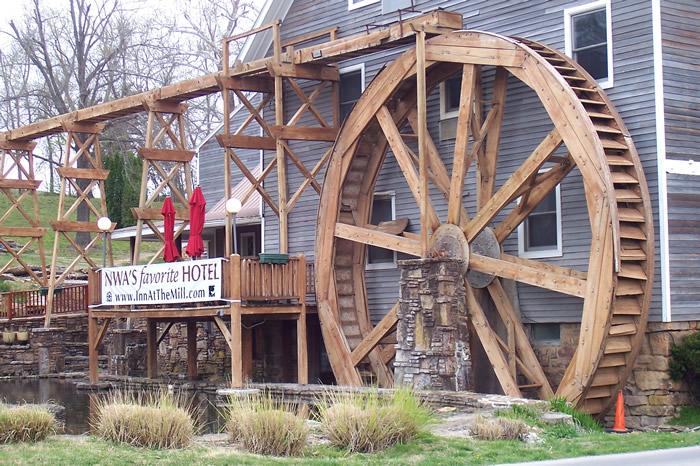
The rebuilt pitchback waterwheel is purely for esthetic purposes and is not really functional.
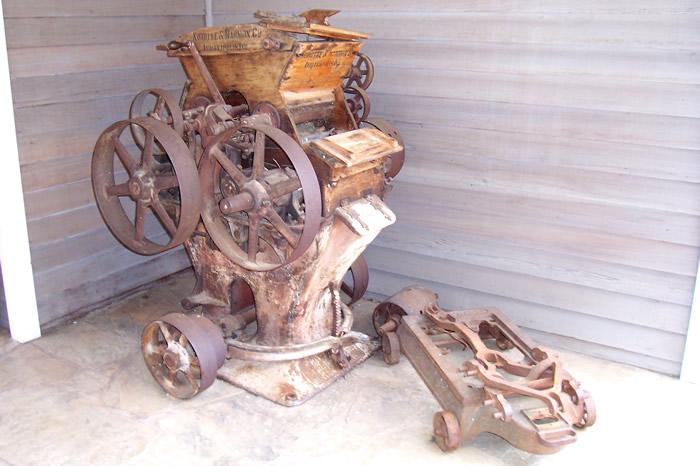
A Nordyke-Marmon Roller Mill sits in an alcove on the porch near the entrance to the inn. The roller mill was manufactured in Indianapolis, In. and may be one that used to function in the old mill.
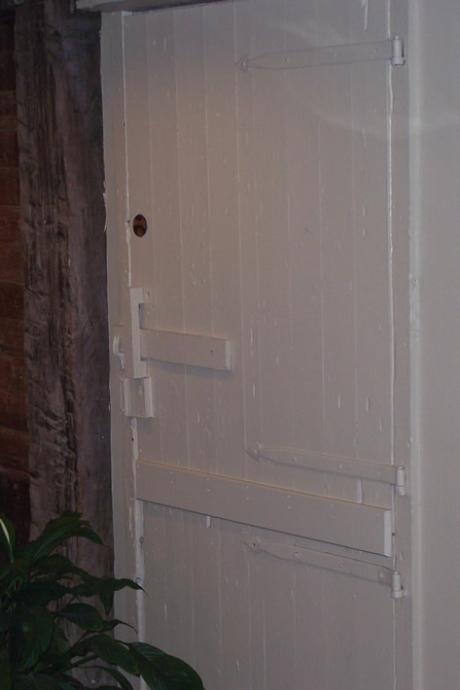
The first-floor door on the east gable end of the mill. The new walk-over connects the new wing with the old mill just above this door.
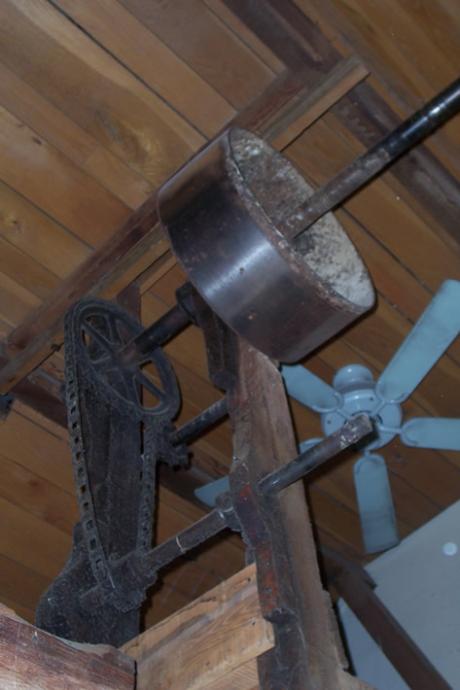
The first mill was built in 1835 by a native Tennesseean, Jake Q. Johnson. The mill was partially burned in 1862 by retreating Confederate troops after the Battle of Pea Ridge, to prevent the Federal armies use of the mills facilities, and was rebuilt by 1864-65, much as it is today by Ben F. Johnson.

Ben F. Johnson ran the mill in the late 1800's, giving the community its name. Benjamin Carl Johnson was next to run the mill. LeRoy Johnson is Carl's son: he and his wife Mary Ellen live within a mile or two of the mill, up by the springs that feed the water supply that used to power the mill. Both remain a good source of knowledge about the mills history. The photo shows an enclosed bucket elevator for corn manufactured by Halteman & Talley, St. Louis, Mo.
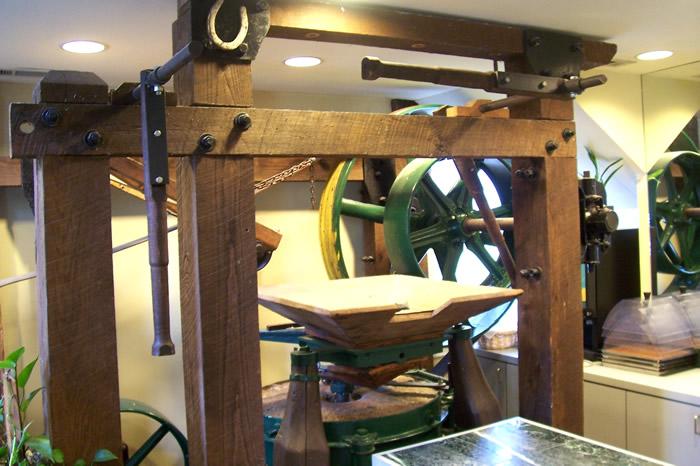
A stone set within a hust frame along with a display of various large pulleys and belts lends some authenticity to the inns foyer/reception and commmon room.
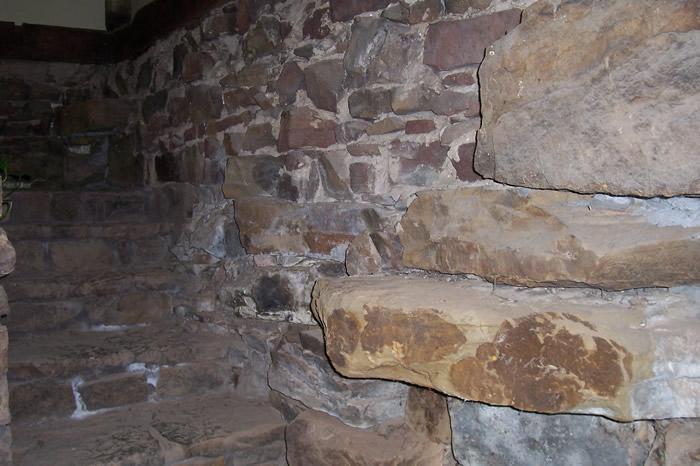
The southeast corner of the basement where the basement steps lead down from the first floor reception area/parlor. Lambeth had moved the mandgement offices into the basement of the mill, but high water flooded the basement several years ago, and it has not been recovered to date for that use.
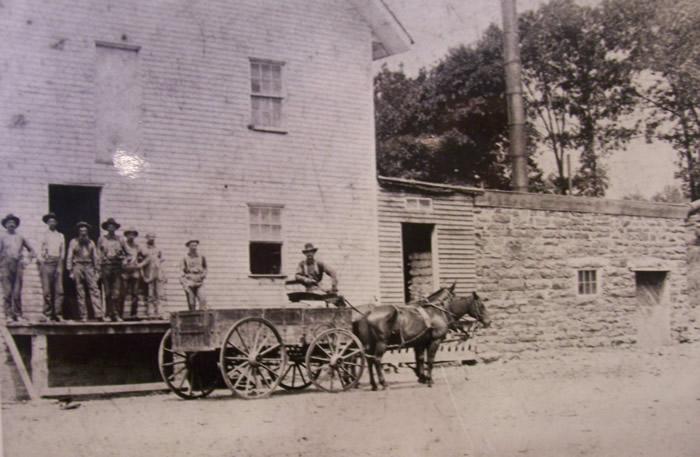
A photo of the mill from about 1898-1900. The mill was one of the oldest businesses in Washington County that this time. The door the men are standing in front of is the side door from photo #6. A canning factory situated behind the mill, but gone by the 1950's, shared waterpower with the mill. The photo also shows a stone boiler house for steam power at about the turn of the 20th century. LeRoy Johnson, grandson of B. F. Johnson, builder of the 1864 mill, used to take loads of canned goods to Kansas City and return with loads of milo and sorghum to be milled.
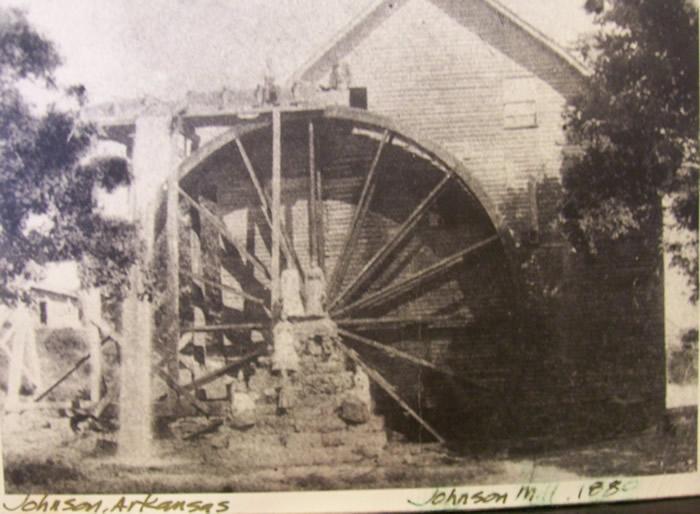
A photo from 1880 of the mill wheel with some ladies on the wheel mount and men at the top of the wheel at the sluice. This wheel was mounted back farther fon the front of the mill than is the current replica.
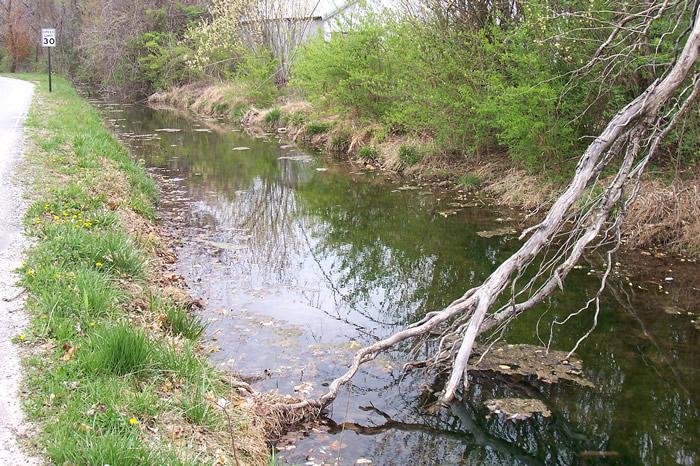
The mill was known as variously as Truesdale Mill, Sutton Mill, and Spring Mill. The last name has the most credence, as the mill is powered from water eminating from many springs that form a stream, pond, then approach the mill in a millrace.
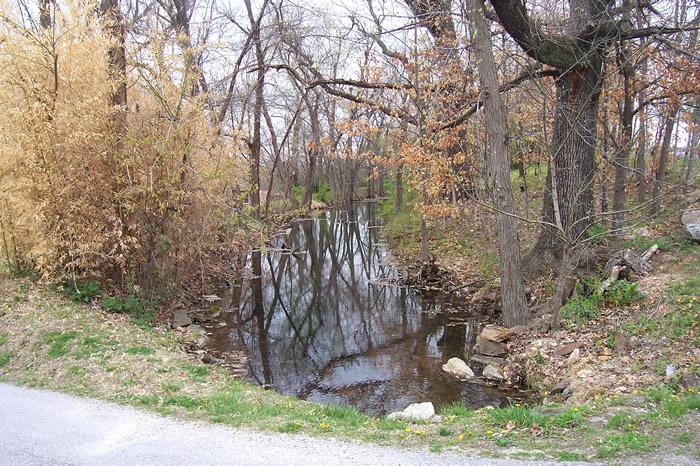
The same millrace, just looking downstream toward the mill, or more exactly, the current James at the Mill restaurant, with Chef Miles James. The restaurant is Arkansas' highest rated.
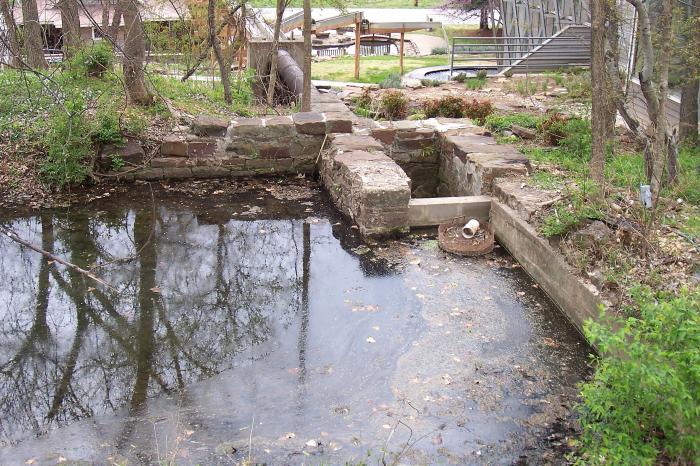
The end of the millrace. From here the water went into a penstock and gravity took it onto the sluice and ultimately to the top of the wheel. Later a diesel-powered turbine powered the mill until it closed in the early 1976. It became a craft shop for a short while in the mid-1980's but the partnership disolved before it could be renovated, at that time, into a restaurant. The mill always ground corn to produce corn meal, never produced any grain flours. The last several decades produced mostly corn meal, cattle feed, and ultra-fine corn meal, almost a flour, for the local red worm farming industry then prevalent around Johnson, Springdale, and Fayetteville, Arkansas. The corn meal for worms was ground through series of 5 sieves until almost as fine as flour. Too large of particles could choke and strangle the worms.
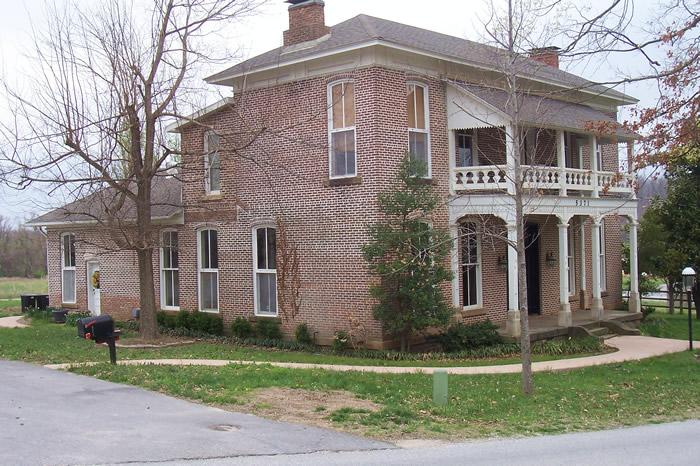
Timbers, some walnut and some oak, were cut on the premises, shaped square with adzes, and adapted for the rebuilt mill in 1864-65. In the mid-1900?s, loading was done along the roadside/frontage Cr 54/Great House Springs Road. A ridge of hardened grain and dirt built up in front of the mill, and youngsters found great fun watching cars go over the hump, seeing how far they could fly off the ground in the early to mid-1900's. *memories of Mary Ellen Johnson, wife of B.F. Johnson?s grandson, LeRoy - personal interview 03/25/2011- Jim Miller The photo shows the miller's house across S. 48th Street from the mill. Both this photo text and the one above are from this source.
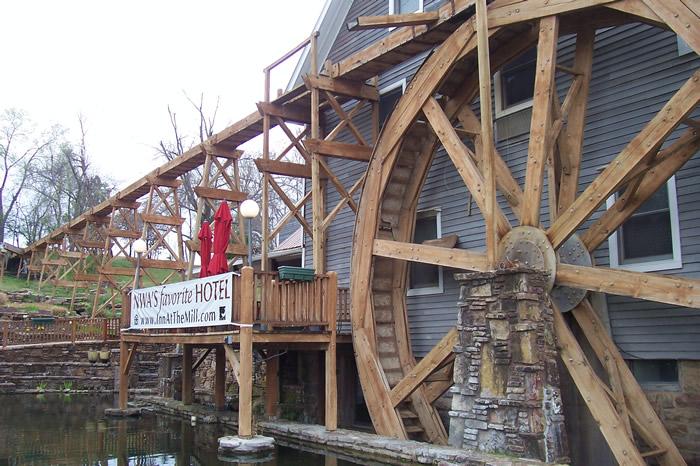
The late 1980's-early 1990's saw James Lambeth obtaining the mill, conducting a modern renovation, and building a connecting new wing of additional hotel suites. also, the contruction of the James at the Mill restaurant was completed by 1992 and opened.